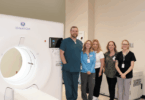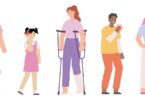A reference guide on where to go for care
As we know all too well, life happens. Sometimes our bodies feel great, and an injury or illness can appear out of nowhere. Your child falls and sprains an ankle while playing at the park. You catch a bug, and now you’re running a high fever, coughing and more. It can be tough to distinguish where to go for medical care when your symptoms feel unbearable, and your primary care provider is unavailable. Here are some key differences to help you decide.
WHAT TO EXPECT IN THE EMERGENCY DEPARTMENT
Emergency Departments are designed to assist patients experiencing life-threatening medical situations. When you come to the Emergency Department at any UHS hospital, a triage nurse will assess your condition. Although they are open 24-7, wait times vary because healthcare staff need to treat the most seriously ill and injured patients first.
WHAT TO EXPECT AT A WALK-IN CENTER
UHS Walk-In Centers are created to provide patients with immediate care for situations that cannot wait for a scheduled doctor’s appointment. This typically includes many medical problems, such as coughs, fevers, flu or ear infections.
VIRTUAL WALK-IN VISITS
- Animal or insect bites
- Coughs
- Cuts
- Diarrhea
- Dizziness
- Eye injuries
- Fever
- Headache
- Nausea or upset stomach
- Rashes
- Sinus pain
- Sore throat
- Urinary tract/bladder infections
- Vomiting
EMERGENCY ROOM
- Asthma attack
- Broken bone (if skin is punctured)
- Burns (if severe)
- Concussion (if loss of consciousness)
- Cuts (if uncontrolled bleeding)
- Fever (for patients under 3 months old or with fever over 105ºF)
- Headache (if severe)
- Seizure
- Shortness of breath (if severe)
- Vomiting blood
PRIMARY CARE OR WALK-IN
- Animal or insect bites
- Broken bone
- Burns







